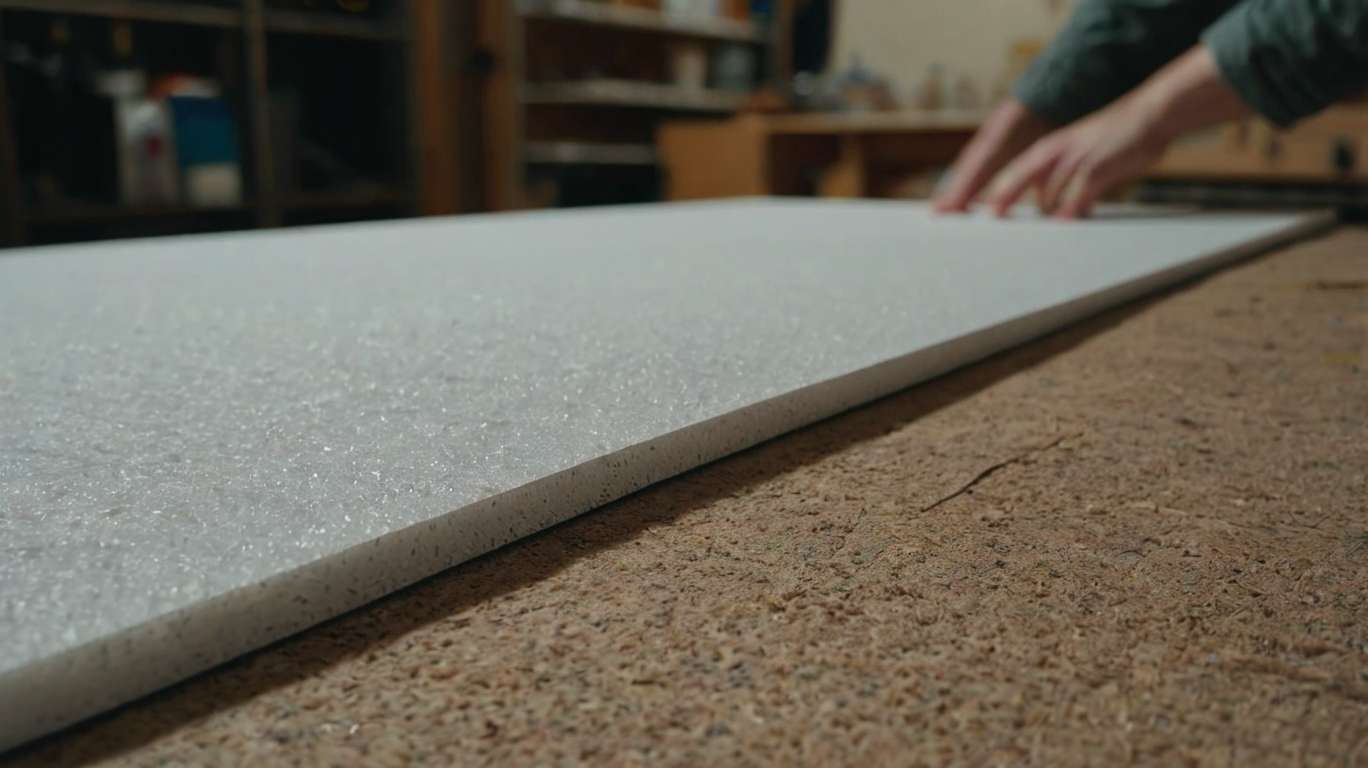

PS foam is a short name for Expanded Polystyrene, a synthetic material that exhibits extraordinary insulation characteristics. It is manufactured by expanding polystyrene beads. The result of this expansion of beads is a stiff foam board with high thermal resistance. PS foam has diverse applications and is used in various industrial sectors like construction and packaging.
PS foam weighs very little and is a non-bulky material. This makes it easy to handle and transport. Installation is also easy and takes less labor effort.
The thermal insulation of this material is unparalleled due to its closed-cell chemical structure. In whichever building this material is installed, it effectively maintains a constant interior temperature, which also reduces energy costs.
Unlike other materials that start to deteriorate due to mold or mildew, EPS foam does not suffer from this problem, as it is moisture-resistant, meaning that mold will not grow on it.
Although it is lightweight, EPS foam is a resilient material and also highly impact-resistant. This inevitably means that it will have a long lifespan and will not be easily damaged.
It has some elasticity and can be compressed to a certain limit, allowing it to fit in a congested space. However, the compression factor depends on the density and thickness of the PS foam sheet.
What makes PS foam beneficial is that it can be melted and reused to manufacture new items. But there is a drawback: the recycling process is not easy.
This material is highly adaptable for various industrial applications, making it a suitable choice across multiple industrial sectors, including construction, packaging, and crafts.
Items like electronics and glassware protect them from shocks and impacts.
Styrofoam is a branded and patented version of extruded polystyrene foam insulation, with diverse industrial applications. The Dow Chemical Company invented Styrofoam in the 40s. Although Styrofoam is similar to polystyrene foam, there are significant differences in its characteristics and manufacturing methods that distinguish it.
Styrofoam is essentially polystyrene foam that undergoes an extrusion process, resulting in a closed-cell foam with a smooth surface and excellent thermal insulation properties.
Since it has a significantly different production process, Styrofoam is quite sturdy, allowing it to bear weight. Although it does not weigh a lot, its compact structure makes it suitable for load-bearing.
Just like polystyrene, Styrofoam also resists water absorption, making it a good insulator against moisture in damp environments.
Styrofoam is a material that insulates against heat, and its capabilities in this aspect are unmatched, so it is used as an insulation material in buildings to lower cooling costs.
Styrofoam does not deteriorate by bacterial action and remains undamaged even when disposed of. That is why it has become a source of land pollution.
Its non-biodegradable characteristic means that it does not decompose, which is detrimental to the planet's sustainability.
PS Foam: This foam type is widely preferred for its excellent thermal insulation properties, and its closed-cell structure allows it to trap air and effectively block heat transfer.
Styrofoam, like its counterpart, also has similar thermal insulation capabilities, but it is much better in this aspect.
PS foam: The density of PS foam is lower than that of Styrofoam, so it is lighter. The lower density also means that its compression strength is lower.
Styrofoam is heavier and denser than EPS/PS foam. This makes it more suitable for load-bearing as the compression strength is also higher.
· PS Foam: The process involves the expansion of polystyrene beads through exposure to steam. The result is a foam with a closed-cell structure and a beaded texture.
· Styrofoam: This foam is manufactured by an extrusion process. The raw material is polystyrene pellets, which are melted and then extruded in sheet form. Once the sheet cools down, it is cut into custom shapes.
PS foam is made by fusing beads as they expand. This produces a structure that is open-cell but interconnected. Nevertheless, there are gaps between the beads, which allow air and moisture to pass through. This structure is vulnerable to water vapor, which can diffuse slowly through the material.
Styrofoam, as we know, is made through extrusion, and so the resulting structure has closed cells. The closed cells prevent water from seeping through. Therefore, Styrofoam is much more moisture-proof than PS foam, and liquid water is also absorbed at a significantly lower rate.
Although EPS foam and Styrofoam are often used interchangeably, they have significant differences that cannot be overlooked. Recognizing these distinctions is crucial for selecting the adequate insulation material, and ignoring such differences means that you end up with either a faulty project or product.
PS foam and Styrofoam both deliver a combination of efficient thermal insulation, adaptability, and affordability, making them a good fit for applications across multiple sectors. Nonetheless, it is vital to consider the ecological impact of every material and explore recycling alternatives to uphold the values of sustainability and eco-friendliness. Making an informed choice is crucial for developing an energy-efficient and eco-friendly structure. Having in-depth information about both these materials allows us to take the right approach.
PS Foam PS foam is a short name for Expanded Polystyrene, a synthetic
READ FULLCorrugated cardboard is one of the most widely used packaging materials, utiliz
READ FULLA visit to a foam board supplier's warehouse may be overwhelming. Shelves upon
READ FULL